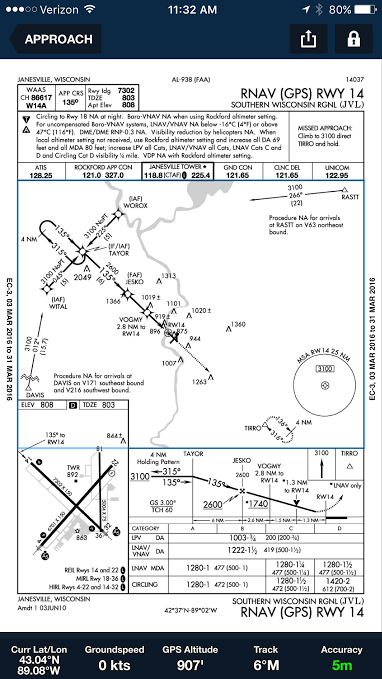fiveoboy01
Pattern Altitude
RNAV(GPS) 14 at KJVL:

Yesterday I was shooting numerous practice approaches at JVL. After an ILS to 4, approach broke me off early(flying into opposing traffic) and I turned southeast and requested the GPS 14 approach. Cleared to direct TAYOR for the approach.
Cross TAYOR, do the parallel entry, inbound on the final approach course, when we cross TAYOR inbound the CFI wants me to turn right to do a lap in the holding pattern. I say no, I don't think we are supposed to do that without permission from ATC.. as they are not expecting an aircraft to make an additional lap in the holding pattern unless specifically requested to lose altitude.
Is that correct? I realize it's a very simple question, but I have been digging and can't find the answer, but I swore I read it somewhere...
Granted we were doing the approach VFR, but I still bet the controller would have wondered what we were doing and likely queried me... Anyways the instructor didn't argue and said "yeah you're right"... but as usual, it made me question myself.. although I'm 94% certain I'm right this time

Yesterday I was shooting numerous practice approaches at JVL. After an ILS to 4, approach broke me off early(flying into opposing traffic) and I turned southeast and requested the GPS 14 approach. Cleared to direct TAYOR for the approach.
Cross TAYOR, do the parallel entry, inbound on the final approach course, when we cross TAYOR inbound the CFI wants me to turn right to do a lap in the holding pattern. I say no, I don't think we are supposed to do that without permission from ATC.. as they are not expecting an aircraft to make an additional lap in the holding pattern unless specifically requested to lose altitude.
Is that correct? I realize it's a very simple question, but I have been digging and can't find the answer, but I swore I read it somewhere...
Granted we were doing the approach VFR, but I still bet the controller would have wondered what we were doing and likely queried me... Anyways the instructor didn't argue and said "yeah you're right"... but as usual, it made me question myself.. although I'm 94% certain I'm right this time
